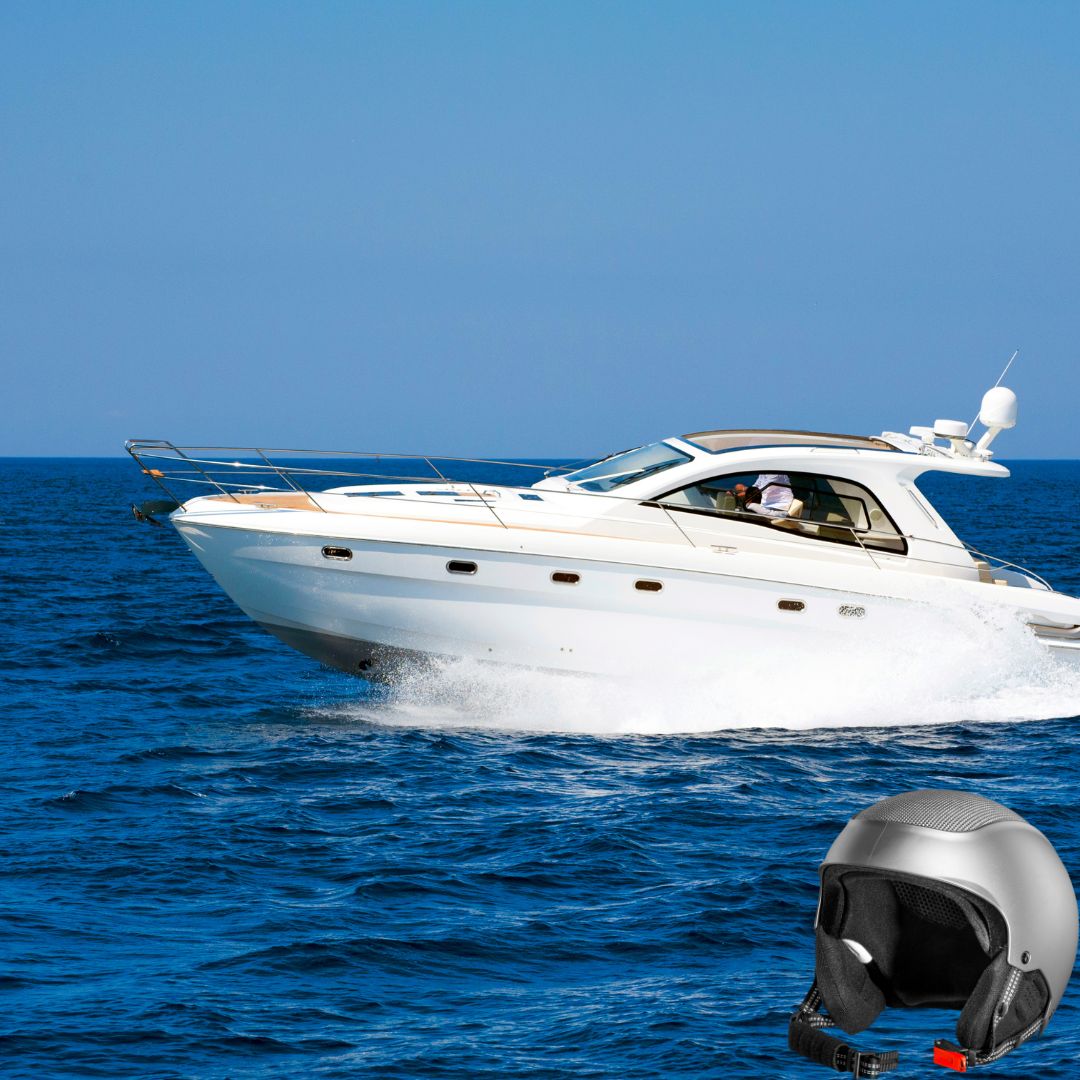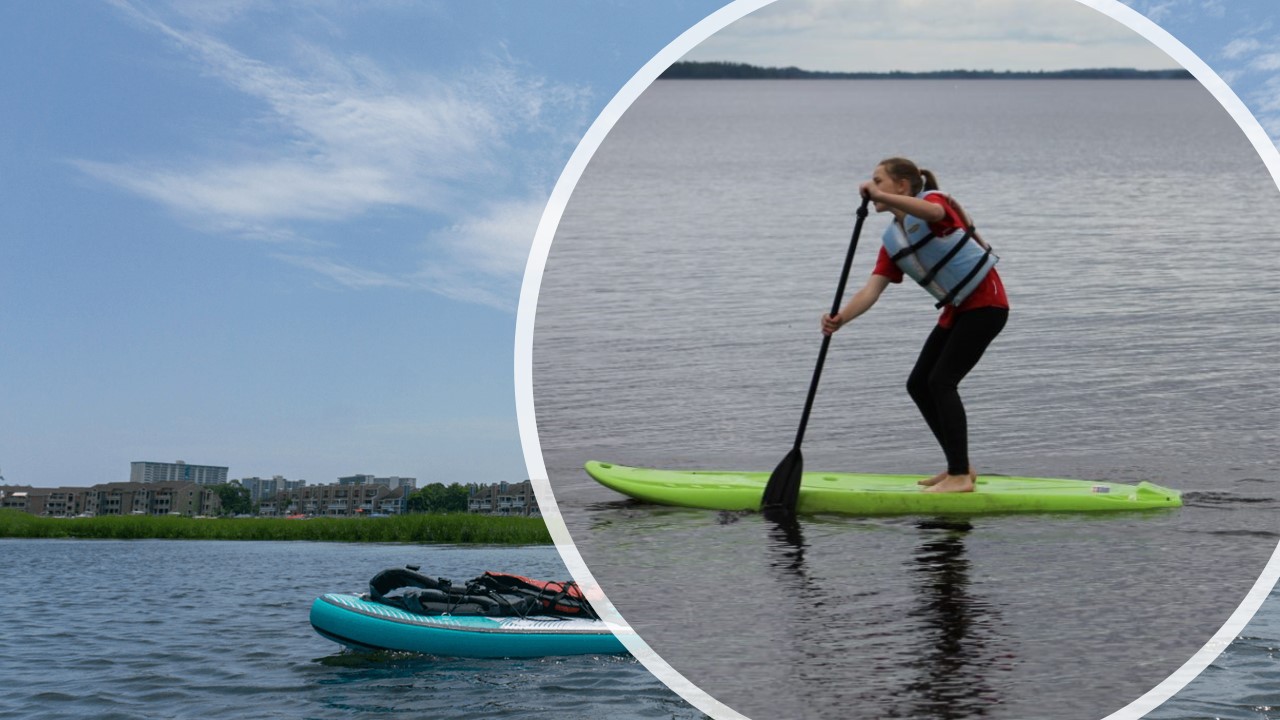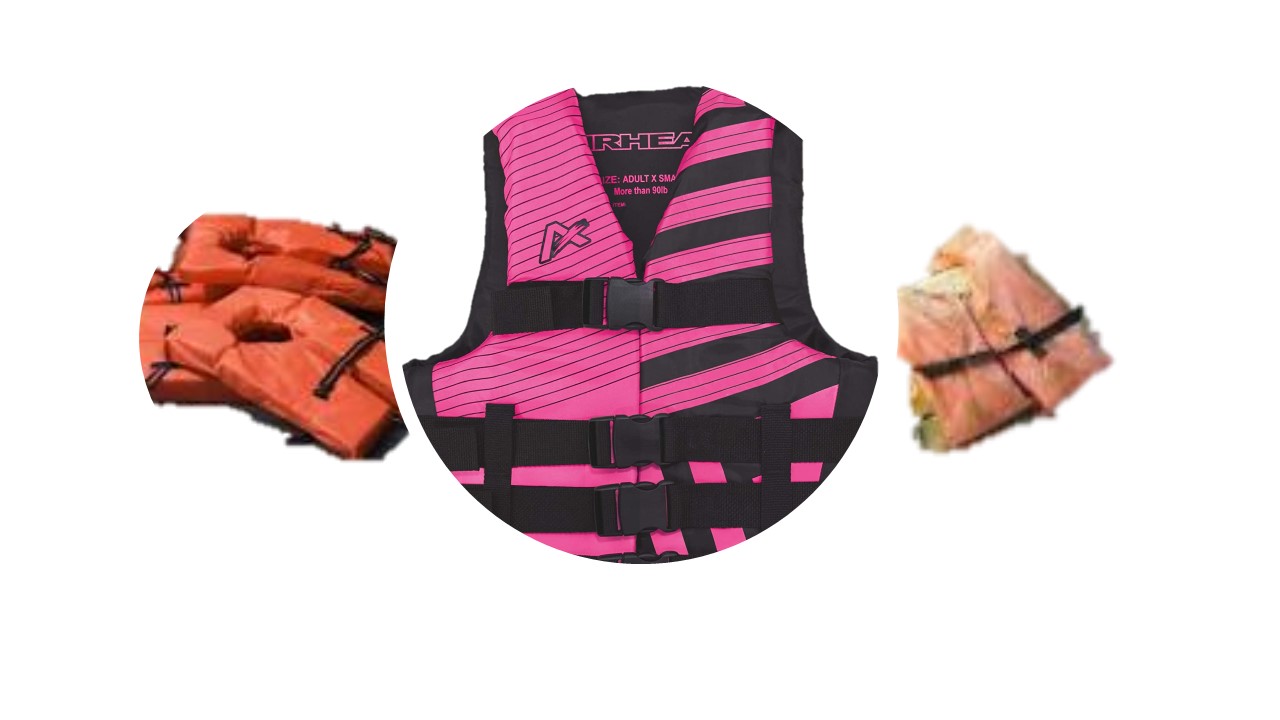Can You Drown With A Life Jacket – Understanding The Limitations
Water safety is a paramount concern for anyone venturing into aquatic environments, prompting the question, “Can you drown with a life jacket?” While life jackets are designed to keep individuals afloat and minimize the risk of drowning, understanding their limitations and the factors that can impact their effectiveness is important.
Whether you’re a seasoned swimmer or just enjoying a day by the beach, understanding the role of life jackets can make a significant difference in ensuring your safety. However, there is a widespread misconception that wearing a life jacket guarantees absolute protection against drowning.
In this article, we will delve into the truth behind water safety measures, dispelling myths and providing valuable insights to ensure you stay informed, confident, and secure while enjoying your water activities. Let’s explore the crucial role of life jackets and the steps you can take to maximize your safety in and around the water.
Can You Drown With A Life Jacket
The straightforward answer is yes, it is possible to drown with a life jacket on. While life jackets are designed to provide buoyancy and increase your chances of survival in water, there are certain conditions in which wearing a life jacket may not be sufficient to prevent drowning.
It is crucial to be aware of these circumstances to ensure your safety.
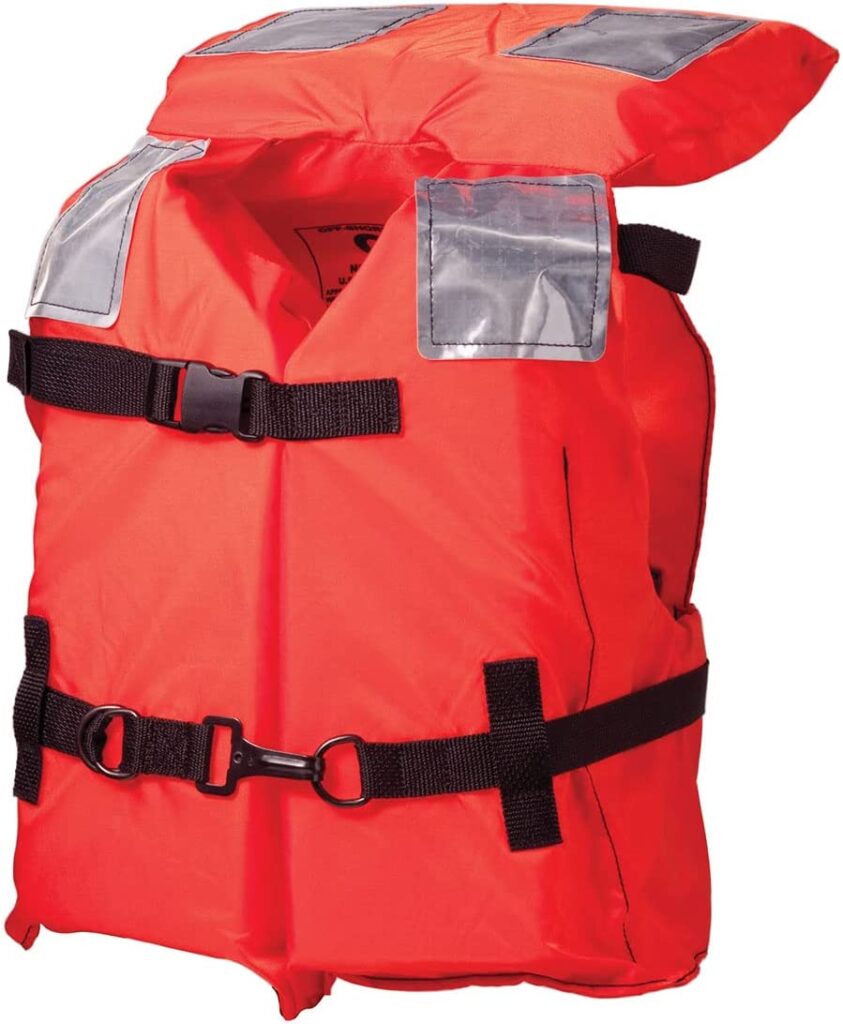
Why Can You Drown With A Life Jacket (Chances Of Drowning With Life Jacket)
There are chances of drowning with life jacket. Here are some conditions in which drowning can still occur despite wearing a life jacket:
1. Being In Rough Water
Life jackets are designed to keep you afloat, but they cannot prevent you from being tossed around by rough water. In turbulent conditions, such as in the ocean during a storm or in fast-moving rivers, powerful waves and strong currents can pose a significant threat.
Even with a life jacket, the force of the water can still cause you to be thrown against obstacles or submerged, potentially leading to incapacitation or unconsciousness. In such situations, it becomes crucial to exercise caution and avoid entering the water when conditions are unsafe.
2. Being Unconscious
If you become unconscious while in the water, a life jacket alone cannot guarantee your safety. Even though the life jacket provides buoyancy, it cannot keep your airway clear and maintain a position that allows you to breathe if you are not conscious.
It is essential to have someone else with you when participating in water activities, as they can provide assistance, keep an eye on your well-being, and take prompt action in case of an emergency.
3. Being Trapped Underwater
Life jackets are primarily designed to assist with floating and staying afloat on the water’s surface. They are not specifically intended to aid in situations where you are trapped underwater, such as being caught in a strong current or submerged by debris.
If you find yourself trapped underwater, it is crucial to remain calm, conserve energy, and look for opportunities to free yourself from the entrapment.
Seeking immediate help and utilizing survival techniques, such as controlled breathing or finding air pockets, can increase your chances of survival in such scenarios.
4. Being Intoxicated
Intoxication, whether due to alcohol or other substances, can impair judgment, coordination, and physical capabilities. It can affect your ability to stay afloat, swim effectively, and respond to water emergencies. Alcohol can also dull your senses and increase the risk of making poor decisions.
If you are under the influence, it is strongly advised to avoid entering the water without a life jacket or engaging in water activities altogether. Ensuring a clear state of mind and making responsible choices are crucial for water safety.
5. Using A Damaged Or Old Life Jacket
Using old or damaged life jackets can increase the risk of drowning, even if you are wearing one. Here’s why:
Deterioration of buoyancy materials: Over time, the buoyancy materials inside a life jacket can deteriorate, reducing their effectiveness in keeping you afloat. Foam or inflatable chambers can lose their buoyancy, making it harder for the life jacket to support your weight in the water.
This can lead to a higher risk of submersion and potential drowning, especially if you’re in rough water or unconscious.
The integrity of straps and buckles: The straps and buckles of a life jacket are essential for securing it properly to your body. If these components are worn, frayed, or damaged, they may fail to keep the life jacket securely in place during water activities.
A loose or improperly fastened life jacket may slip off or move around, compromising its ability to keep you afloat and increasing the risk of drowning.
Tears or punctures in the fabric: Any tears, punctures, or holes in the fabric of a life jacket can impact its buoyancy. Water can seep into these openings, weighing down the life jacket and reducing its ability to keep you above water.
It’s crucial to regularly inspect your life jacket for any signs of damage and promptly repair or replace it if necessary.
To ensure your safety, always use a well-maintained, Coast Guard-approved life jacket. Inspect your life jacket before each use, checking for any signs of wear and tear.
Pay close attention to the buoyancy material, straps, buckles, and fabric. If you notice any damage or deterioration, it is best to replace the life jacket with a new one that meets safety standards.
6. Wearing An Ill-Fitted Life Jacket
Wearing an ill-fitting life jacket can increase the risk of drowning, even if you have one on. Here’s why:
Inadequate buoyancy: An ill-fitting life jacket may not provide sufficient buoyancy to keep your body afloat in the water. If the life jacket is too loose or too tight, it may not be able to properly support your weight, potentially causing you to sink or struggle to stay afloat.
This can be particularly dangerous if you are in rough water or facing challenging conditions.
Impaired movement and restricted mobility: Wearing a life jacket that doesn’t fit properly can restrict your movement and hinder your ability to swim and navigate in the water.
This can make it more difficult to stay above water, especially if you need to exert effort to stay afloat or reach safety. An ill-fitting life jacket can limit your range of motion, potentially leading to exhaustion or panic, further increasing the risk of drowning.
Displacement of the life jacket: If a life jacket is too large or not properly secured, it may shift or ride up when you are in the water. This can result in the life jacket moving toward your face, covering your airway, and obstructing your ability to breathe.
It’s crucial to ensure a snug fit and secure fastening of the life jacket to prevent displacement and maintain its intended functionality.
To mitigate the risk of drowning, it is important to wear a properly fitted life jacket. Follow these guidelines to ensure a proper fit:
– Size selection: Choose a life jacket that is appropriate for your weight, as indicated on the label. Avoid using a life jacket that is too large or too small for your body size.
– Adjustable straps: Adjust the straps of the life jacket to achieve a snug fit. The life jacket should be comfortably snug around your chest and torso, allowing for easy movement of your arms and ensuring the life jacket stays securely in place.
– Check for mobility: Move your arms and shoulders while wearing the life jacket to ensure it does not restrict your range of motion. You should be able to comfortably move your arms and perform basic swimming motions.
– Test in water: Before relying on a life jacket in an emergency, test its buoyancy in a controlled water environment to ensure it keeps you afloat and your head above water.
7. You Experience Hypothermia While Swimming
Hypothermia can pose a significant risk even if you are wearing a life jacket while swimming. Here’s why:
Reduced body heat retention: Hypothermia occurs when your body loses heat faster than it can produce it, leading to a dangerous drop in body temperature. When immersed in cold water, your body loses heat rapidly.
Even with a life jacket on, your limbs and extremities are still exposed to the cold water, increasing the risk of hypothermia. Prolonged exposure to cold water can impair your ability to think clearly and react appropriately, making it difficult to stay afloat and increasing the chances of drowning.
Impaired motor function: As hypothermia progresses, it can affect your motor skills and coordination, making it more challenging to swim and stay buoyant. Your muscles may become weak and sluggish, impairing your ability to move effectively and increasing the likelihood of submersion.
Loss of consciousness: Severe hypothermia can lead to loss of consciousness. If you become unconscious while in the water, a life jacket alone may not be sufficient to keep you afloat and prevent drowning.
Even though the life jacket provides buoyancy, you may be unable to maintain a position that allows you to breathe.
To mitigate the risk of hypothermia while swimming, consider the following measures:
– Be mindful of water temperature: Avoid swimming in cold water conditions, especially if you are not adequately prepared or acclimated to the temperature. Cold water significantly increases the risk of hypothermia, even with the assistance of a life jacket.
– Limit exposure time: If you must swim in cold water, try to minimize your exposure time to reduce the risk of hypothermia. Shorter periods in the water can help mitigate the effects of cold on your body.
– Wear appropriate protective gear: In addition to a life jacket, consider wearing a wetsuit or drysuit to provide insulation and minimize heat loss while in cold water. Wear swimming gloves too.
– Seek warm shelter and treatment: If you suspect hypothermia or experience symptoms such as intense shivering, confusion, or drowsiness, seek immediate warmth and medical attention. Remove wet clothing and warm the body gradually with blankets or warm liquids.
Remember, a life jacket is designed to assist in buoyancy and increase your chances of survival in the water, but it does not guarantee protection against hypothermia.
Taking precautions, being aware of the water temperature, and understanding the signs and risks of hypothermia are vital for your safety while swimming in cold water conditions.
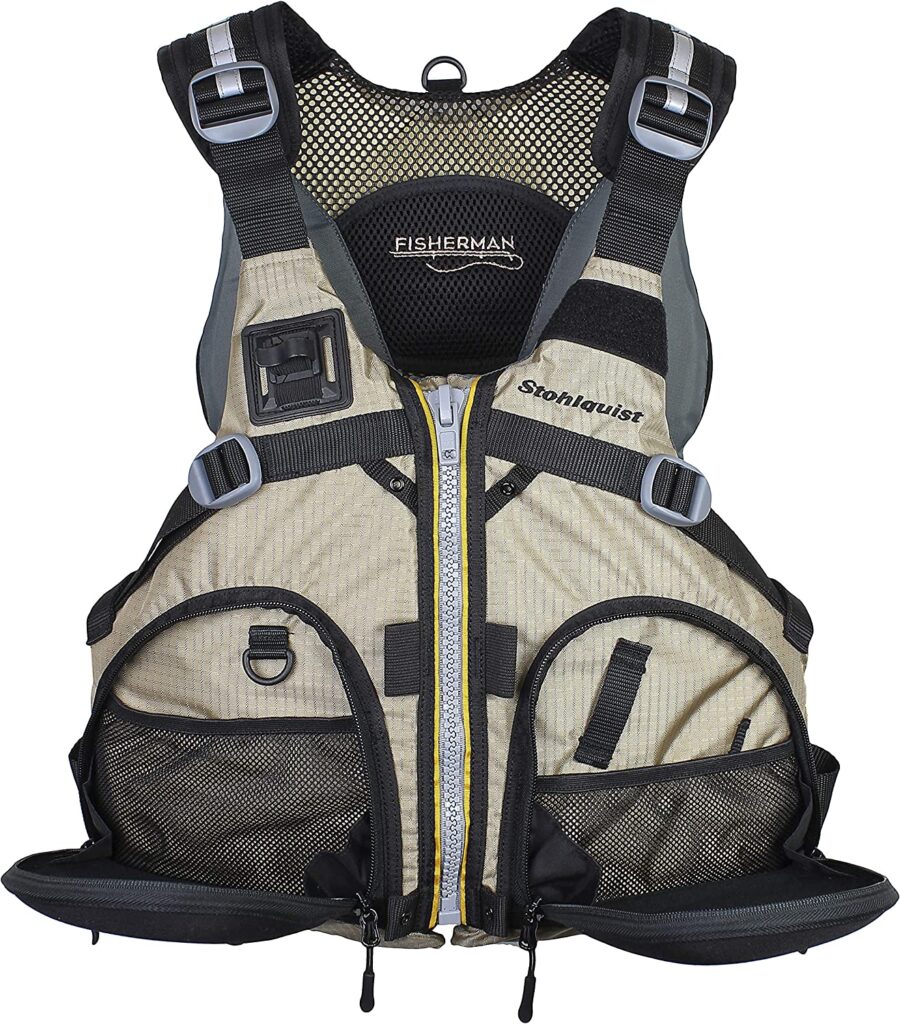
Additional Safety Measures To Life Jackets (Can You Drown With A Life Jacket)
In addition to wearing a life jacket, there are several important safety measures you should consider to enhance your water safety. These measures complement the use of life jackets and further reduce the risk of accidents and drowning. Here are some additional safety measures to keep in mind:
1. Learn To Swim
Learning how to swim is an essential skill that can significantly improve your safety in the water. Swimming lessons provide you with the knowledge and techniques to navigate through the water effectively, increasing your confidence and ability to handle different water conditions.
2. Water Safety Training
Consider participating in water safety courses or training programs. These courses provide valuable knowledge about water hazards, rescue techniques, and basic first aid. Being educated about water safety can help you make informed decisions and respond appropriately in emergency situations.
3. Buddy System
Whenever possible, swim or participate in water activities with a buddy. Having someone else nearby provides an extra layer of safety and assistance.
In case of an emergency, your buddy can help you or alert others for help. Always keep an eye out for each other and communicate any concerns or changes in the water conditions.
4. Stay Within Designated Areas
Swim in areas that are designated for recreational activities and monitored by lifeguards, if available. These areas are typically safer, as they are inspected for potential hazards and have trained personnel on site to provide assistance if needed.
5. Be Aware Of Water Conditions
Before entering the water, be mindful of the current, waves, tides, and other environmental factors that may impact your safety.
Avoid swimming in rough waters or areas with strong currents that can make it difficult to stay afloat, even with a life jacket on. Pay attention to warning signs or advisories from authorities regarding water conditions.
6. Avoid Alcohol And Drugs
It is crucial to refrain from consuming alcohol or using drugs before or during water activities. These substances impair judgment, coordination, and reaction time, increasing the risk of accidents and drowning. Clear thinking and coordination are essential for staying safe in the water.
7. Regular Equipment Maintenance
Inspect your life jacket and other water-related equipment regularly. Check for any signs of wear and tear, damage, or malfunction. Ensure that zippers, buckles, and straps are in good working condition. Replace any faulty or worn-out equipment to maintain its effectiveness.
Remember, while a life jacket is an important safety device, it should be combined with other safety measures to provide comprehensive protection.
By incorporating these additional safety measures into your water activities, you can further enhance your safety and reduce the risks associated with water-related accidents.
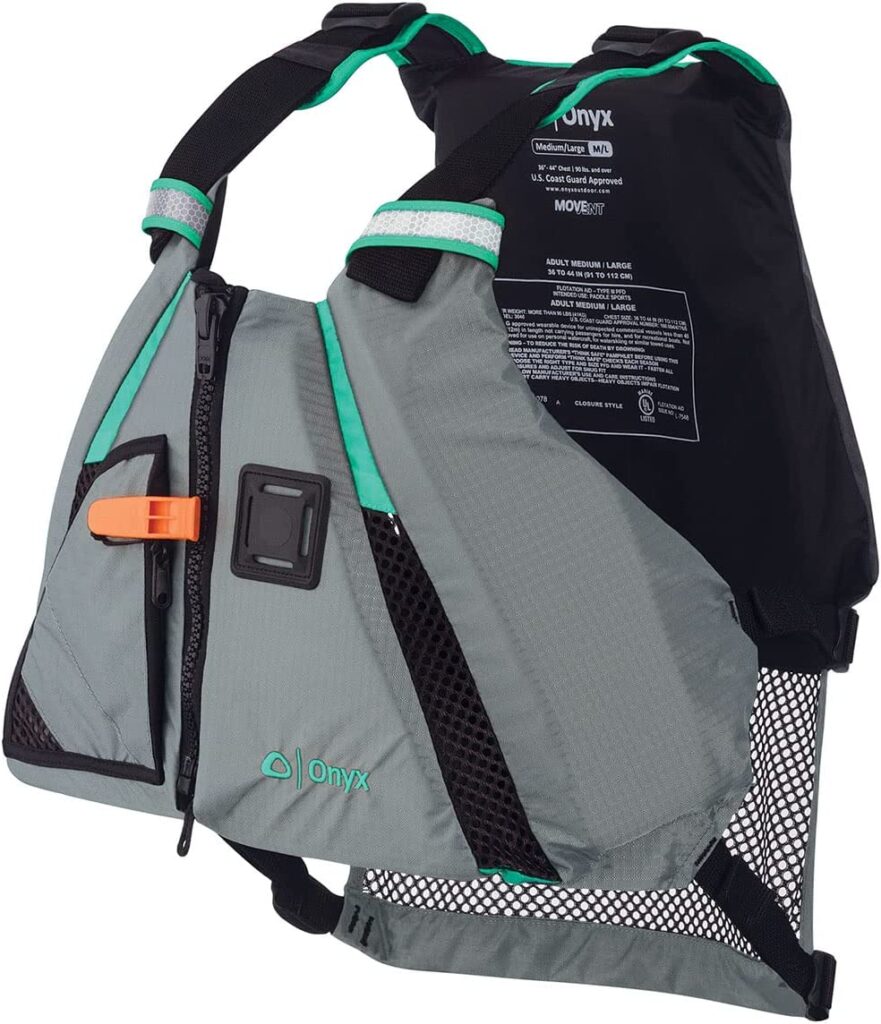
The Best Life Jackets (Can You Drown With A Life Jacket)
When it comes to life jackets, there are various options available, each designed for specific water activities and personal preferences. Here are some popular types of life jackets that are widely considered to be among the best:
1. Type I: Offshore Life Jacket – This type of life jacket is designed for open waters, rough conditions, and extended rescue time. It provides the highest buoyancy and offers the greatest chance of survival.
2. Type II: Near-Shore Buoyant Vest – These life jackets are suitable for calm or inland waters where rescue is expected to be quicker. They provide good buoyancy and are more comfortable to wear for extended periods.
3. Type III: Flotation Aid – These life jackets are commonly used for recreational boating and water sports. They offer excellent mobility and are designed for conscious individuals in calm or sheltered waters.
4. Type IV: Throwable Devices – These are throwable flotation devices such as rings or cushions that can be used to provide temporary buoyancy to someone in distress. They are not designed to be worn but should be easily accessible on a boat.
5. Type V: Special Use Devices – These life jackets are designed for specific activities such as kayaking, windsurfing, or paddleboarding. They offer a range of designs and styles tailored to the specific water sport or activity.
When choosing a life jacket, consider factors such as the intended use, comfort, fit, buoyancy rating, and any specific requirements or regulations for your location or activity. It’s crucial to select a Coast Guard-approved life jacket that is appropriate for your needs and ensure that it fits properly when worn.
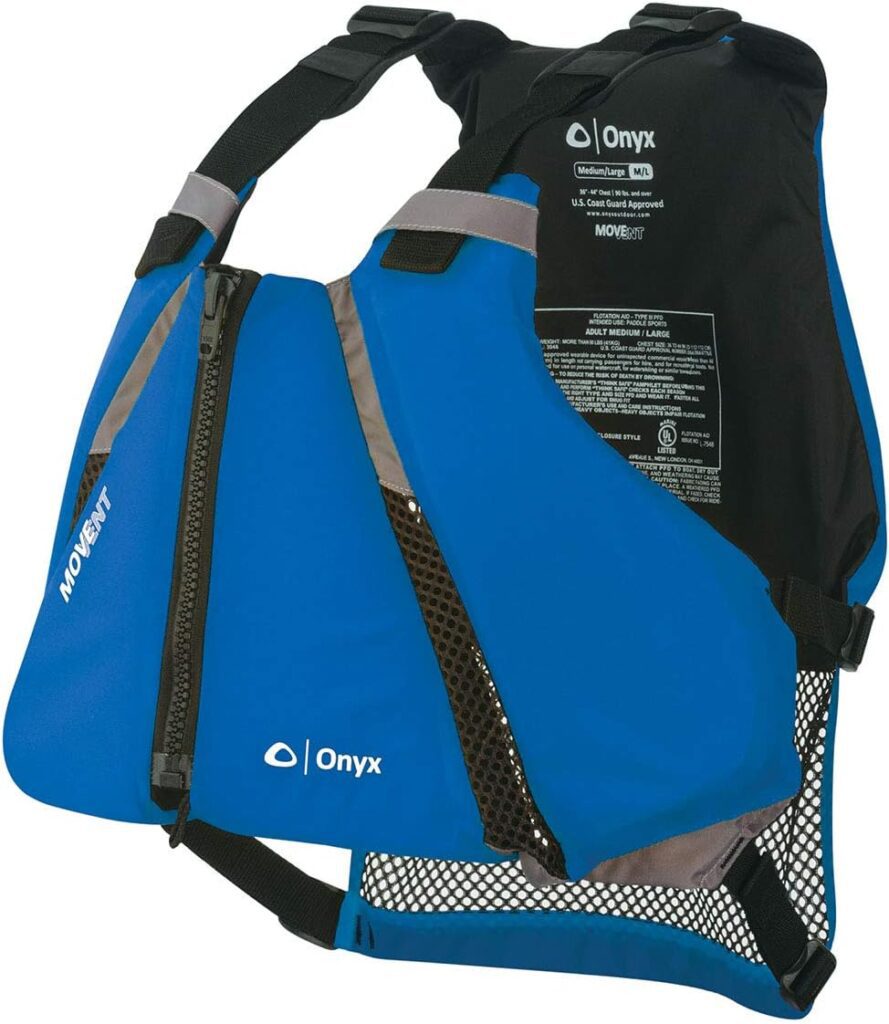
Life Jacket Benefits: The Purpose And Functionality Of Life Jackets
Life jackets serve a crucial role in water safety by providing buoyancy and helping to prevent drowning. Their primary purpose is to keep individuals afloat and their heads above water. Here’s a closer look at the purpose and functionality of life jackets:
1. Buoyancy: Life jackets are designed to be buoyant, meaning they provide upward force in the water to counteract the weight of your body. This buoyancy helps to keep you afloat, even if you are unconscious or unable to swim.
2. Flotation materials: Life jackets are typically constructed with buoyant materials, such as foam panels or inflatable chambers, that help them stay afloat. These materials are strategically placed to support the wearer’s body and maintain a proper position in the water.
3. Distribution of buoyancy: Life jackets are designed to distribute buoyancy evenly across the wearer’s chest, back, and shoulders. This distribution helps to keep the head above water, ensuring that the airway remains clear for breathing.
4. Secure fit: Life jackets come with adjustable straps or buckles to ensure a secure fit around the wearer’s body. A properly fitted life jacket is essential to maintain its effectiveness. It should be snug but not overly tight, allowing for comfortable movement while still keeping the life jacket securely in place.
5. Visibility and safety features: Many life jackets are designed with bright colors and reflective strips to enhance visibility in the water, making it easier for rescuers to locate individuals in distress. Some models also include safety whistles or lights to attract attention and signal for help.
6. Coast Guard approval: Life jackets undergo rigorous testing and must meet specific standards set by the U.S. Coast Guard or other regulatory bodies. Approved life jackets are labeled with a Coast Guard approval number to ensure their reliability and compliance with safety requirements.
It is important to note that different types of life jackets are available for various water activities and conditions. The specific design and functionality may vary depending on the intended use, such as for recreational boating, kayaking, or commercial purposes.
RELATED: What Is A Characteristic Of A Type 3 Life Jacket
Common Misconceptions Or Myths About Life Jackets
Myth 1: Life Jackets Are Uncomfortable to Wear
Fact: Modern life jackets come in various styles and designs, including inflatable and slim-fitting options. They are designed for comfort and ease of movement. Properly fitted life jackets should not be uncomfortable when worn.
Myth 2: You Only Need a Life Jacket If You Can’t Swim
Fact: Life jackets are essential for all swimmers, including strong swimmers. Accidents can happen to anyone in the water, and a life jacket provides an added layer of safety, especially in emergencies, rough waters, or when exhaustion sets in.
Myth 3: Life Jackets Are Only for Boating
Fact: While life jackets are crucial for boating safety, they are also recommended for various water activities, including kayaking, paddleboarding, fishing, and even swimming in open water. Accidents can occur anytime you’re near water.
Myth 4: I Can Quickly Put On a Life Jacket in an Emergency
Fact: In emergencies, there may not be enough time to put on a life jacket properly. Wearing one beforehand ensures you’re always prepared and maximizes your chances of survival.
Myth 5: Only Children Need to Wear Life Jackets
Fact: Everyone, regardless of age or swimming ability, should wear a life jacket when participating in water activities, especially in situations with a higher risk of drowning.
Myth 6: Life Jackets Make You Float Face Down
Fact: Modern life jackets are designed to keep your head above water. They have buoyancy in the front, which helps you float with your face upward.
Myth 7: You Don’t Need a Life Jacket in Calm Water
Fact: Accidents can happen in calm water too, and even strong swimmers can become incapacitated due to unexpected situations. Always wear a life jacket to be prepared.
Myth 8: Life Jackets Are Bulky and Inconvenient
Fact: Many life jackets are compact and lightweight, making them easy to wear. There are inflatable options that are barely noticeable until inflated.
Myth 9: Life Jackets Are Expensive
Fact: There is a wide range of life jackets available at different price points. Safety should always be a priority, and a good-quality life jacket is a reasonable investment for water activities.
Myth 10: Life Jackets Are Only Necessary in Deep Water
Fact: Accidents can happen in shallow water too, and a life jacket can prevent head injuries or unconsciousness caused by shallow water hazards.
RELATED: How Much Water Should A Sports Person Drink?
Life Jacket Safety Tips
1. Always Wear Your Life Jacket
The most important rule is to wear your life jacket at all times when you’re on or near the water. Accidents can happen quickly, so being prepared is essential.
2. Choose the Right Size and Fit
Ensure your life jacket fits properly by selecting the correct size based on your weight and chest size. An ill-fitting life jacket may not provide adequate buoyancy.
3. Secure All Straps and Buckles
Before entering the water, check that all straps and buckles are properly fastened and tightened. A loose life jacket won’t provide the necessary support.
4. Inspect Your Life Jacket Regularly
Check your life jacket for signs of wear, damage, or deterioration before each use. Replace it if you notice any issues.
5. Don’t Alter Your Life Jacket
Avoid making modifications or alterations to your life jacket. Any changes can affect its performance and safety.
6. Wear Your Life Jacket While Boarding or Exiting a Boat
Ensure everyone on a boat wears their life jacket while boarding or exiting, as these are times when accidents can happen.
7. Wear Your Life Jacket When Swimming in Open Water
When swimming in rivers, lakes, or the ocean, keep your life jacket on, especially if you’re far from shore or in strong currents.
8. Know How to Self-Rescue
Learn how to turn yourself face-up in the water if you’re wearing a life jacket. Practice floating and swimming with it on to build confidence.
9. Keep Spare Life Jackets Onboard
If you’re on a boat, ensure there are enough life jackets for every passenger. Have additional life jackets available in case unexpected guests join the trip.
10. Teach Children About Life Jacket Safety
Educate children about the importance of wearing life jackets and how to properly put them on. Supervise them closely near water.
11. Stay Sober
Avoid alcohol and drugs when participating in water activities, as impaired judgment can increase the risk of accidents.
12. Know the Local Laws and Regulations
Familiarize yourself with local laws and regulations regarding life jacket use. Different regions may have specific requirements for boating and water sports.
13. Use Inflatable Life Jackets Correctly
If you’re using an inflatable life jacket, make sure you understand how it works and how to manually inflate it if needed.
14. Keep a Safety Whistle or Light on Your Life Jacket
Attach a safety whistle or light to your life jacket to signal for help in emergencies, especially in low-light conditions.
15. Stay Informed About Weather Conditions
Check the weather forecast before heading out on the water. Be aware of changing conditions and take appropriate precautions.
Proper Life Jacket Fit and Sizing
Proper life jacket fit and sizing are crucial for ensuring safety while on the water. Choosing the right size and adjusting the life jacket correctly can make a significant difference in its effectiveness. Here’s how to choose the right size, fit a life jacket properly, and include chest size and weight guidelines:
Choosing the Right Size
- Check the Label: Look at the label on the life jacket to find the manufacturer’s guidelines for sizing. Life jackets are typically categorized by weight and chest size.
- Consider Weight Range: Pay attention to the weight range specified on the label. Different life jackets are designed to provide appropriate buoyancy for individuals within specific weight ranges.
- Measure Your Chest: To ensure a snug fit, measure your chest at its widest point, usually right under the armpits. Use a flexible measuring tape for accuracy.
- Compare Measurements: Compare your chest measurement and weight to the manufacturer’s sizing chart. Choose
Life Jacket Standards and Regulations
When it comes to life jackets, safety is paramount. Various organizations and agencies worldwide have established rigorous standards and regulations that life jackets must meet to ensure their effectiveness in saving lives.
These standards serve as guidelines for manufacturers, ensuring that life jackets provide the necessary buoyancy and functionality in different water scenarios.
1. United States Coast Guard (USCG) Standards
In the United States, the primary authority responsible for regulating and setting standards for life jackets is the United States Coast Guard (USCG).
The USCG categorizes life jackets into several types, each designed for specific water activities. These types include Type I, Type II, Type III, Type IV, and Type V life jackets.
Compliance with USCG standards ensures safety by guaranteeing that life jackets are designed and tested to meet specific criteria. For example:
- Buoyancy: USCG standards mandate that life jackets provide a minimum buoyancy to keep wearers afloat, depending on the type and intended use. This ensures that individuals can stay above water even if they’re unconscious or injured.
- Visibility: Life jackets must have reflective material or high-visibility colors to enhance visibility in the water, making it easier for rescuers to locate wearers.
- Flotation Position: USCG-approved life jackets are designed to turn an unconscious wearer face-up in the water, reducing the risk of drowning.
- Durability and Quality: Manufacturers must adhere to stringent quality control standards to ensure that life jackets remain effective even after prolonged use.
- Testing: Life jackets undergo rigorous testing to assess their performance in various conditions, such as buoyancy tests and in-water trials.
Users are strongly encouraged to look for the USCG approval label on their life jackets. This label indicates that the life jacket meets the necessary standards and is suitable for the intended activity.
2. International Standards
Beyond the USCG, there are international standards and regulations set by organizations like the International Organization for Standardization (ISO). These standards ensure consistency in life jacket design and safety worldwide.
International standards, like the ISO 12402 series, cover a wide range of water activities and provide guidelines for factors such as buoyancy, materials, design, and labeling.
3. Regional Regulations
Different regions may have their own regulations and standards, so it’s essential to be aware of and comply with local requirements when using life jackets.
4. Additional Certifications
Some life jackets may have additional certifications, such as those from organizations like the National Safe Boating Council (NSBC) or the Canadian Coast Guard.
Life Jacket Failure
While life jackets are designed to be reliable and effective, it is important to acknowledge that there can be instances of life jacket failure. Although rare, it’s crucial to understand potential scenarios where a life jacket may not function as intended. Here are some factors that can contribute to life jacket failure:
1. Incorrect usage: Proper usage of a life jacket is vital for its effectiveness. If a life jacket is not worn correctly or is not properly fastened, it may not provide the necessary buoyancy and support. Make sure to follow the manufacturer’s instructions on how to properly wear and secure the life jacket.
2. Damage or deterioration: Life jackets can become damaged or deteriorate over time due to wear and tear, exposure to sunlight, chemicals, or improper storage.
Inspect your life jacket regularly for any signs of damage, such as rips, tears, or broken components. Ensure that the buoyant materials are intact and not waterlogged. If you notice any damage or deterioration, replace the life jacket immediately.
3. Improper sizing: Wearing a life jacket that is too large or too small for your body size can affect its performance. A life jacket that is too big may not provide a snug fit, reducing its ability to keep you afloat.
On the other hand, a life jacket that is too small can restrict your movement and limit its effectiveness. Choose a life jacket that fits you properly according to your weight and chest size.
4. Failure to maintain buoyancy: In rare cases, a life jacket’s buoyancy materials, such as foam panels or inflatable chambers, may fail to provide adequate flotation.
This can be due to manufacturing defects or damage to the buoyant materials. It is essential to choose a reputable brand and regularly inspect the life jacket to ensure the buoyancy materials are functioning properly.
5. Extreme circumstances or impact: While life jackets are designed to withstand most water-related scenarios, they may not be able to withstand extreme conditions, such as heavy surf, strong currents, or impacts from collisions.
In such cases, the forces exerted on the life jacket can exceed its capabilities, potentially compromising its effectiveness.
READ ALSO: Do You Need A Life Jacket On A Paddle Board – Unveiling The Key To Safe And Enjoyable Adventures
When Should A Life Jacket Be Discarded And Replaced
Knowing when to discard and replace a life jacket is essential to ensure your safety in the water. Here are some guidelines to help you determine when a life jacket should be replaced:
1. Damage: If your life jacket shows signs of significant damage, such as rips, tears, or broken components, it is time to replace it. Damaged life jackets may not provide the necessary buoyancy or support in an emergency situation.
2. Deterioration: Over time, life jackets can deteriorate due to exposure to sunlight, chemicals, saltwater, or improper storage.
Look for signs of deterioration, such as fading, disintegration of materials, or loss of buoyancy. If you notice any significant deterioration, it’s best to replace the life jacket.
3. Waterlogging: If your life jacket becomes waterlogged and excessively heavy, it may indicate damage to the buoyant materials. Waterlogging can reduce the life jacket’s effectiveness in keeping you afloat.
Squeeze the life jacket to check for any water retention. If it remains waterlogged or takes an extended time to dry, it is time for a replacement.
4. Loss of buoyancy: A life jacket’s primary function is to provide buoyancy and keep you afloat. If you notice a significant decrease in buoyancy, it may indicate a problem with the buoyant materials.
Test the life jacket in a controlled water environment to assess its buoyancy. If it does not keep you afloat as expected, it should be replaced.
5. Outdated or expired: Life jackets may have an expiration date specified by the manufacturer. Check for any expiration date or recommended lifespan provided by the manufacturer. If your life jacket has exceeded the recommended lifespan, it is best to replace it with a new one.
6. Changes in body size or weight: If your body size or weight has significantly changed, your current life jacket may no longer fit properly.
Life jackets should be properly sized and fitted to ensure their effectiveness. If your life jacket no longer fits you correctly, consider replacing it with one that suits your current size and weight.
Keep in mind that it is always better to err on the side of caution when it comes to life jackets. Regularly inspect your life jacket for any signs of damage, deterioration, or loss of buoyancy. If in doubt about the condition of your life jacket, it is advisable to replace it with a new one to ensure your safety in the water.
How Long Can You Float With A Life Jacket
The length of time you can float with a life jacket depends on various factors, including the type of life jacket, its buoyancy rating, your body weight, and the water conditions.
Generally, a well-maintained and properly worn life jacket can provide buoyancy and keep you afloat for an extended period. Here are some considerations:
1. Buoyancy rating: Life jackets have different buoyancy ratings, typically measured in pounds or Newtons. The higher the buoyancy rating, the greater the amount of flotation it provides. A higher buoyancy rating allows you to stay afloat more easily and for a longer duration.
2. Body weight: Your body weight affects the buoyancy provided by the life jacket. Heavier individuals may require a life jacket with higher buoyancy to maintain proper flotation. It’s important to choose a life jacket that is appropriate for your weight range to ensure optimal buoyancy and floatation.
3. Water conditions: The water conditions can impact how long you can float with a life jacket. Calm and still waters require less effort to stay afloat compared to turbulent waters, waves, or currents.
It’s crucial to be aware of the water conditions and adjust your movements and positioning accordingly to conserve energy and maintain flotation.
4. Personal factors: Your physical condition, swimming ability, and energy levels also play a role in how long you can float with a life jacket. Individuals with good swimming skills and stamina may be able to stay afloat for longer periods compared to those who are less proficient in the water.
It’s important to note that while a life jacket provides buoyancy and enhances your chances of staying afloat, it is still essential to seek help and rescue as soon as possible. The primary purpose of a life jacket is to keep you buoyant and give you time to be rescued or reach safety.
Ultimately, the duration you can float with a life jacket varies depending on the factors mentioned above. It is always advisable to prioritize your safety, stay calm, conserve energy, and seek assistance or a safe exit from the water as soon as possible.
Will A Life Jacket Keep You Afloat If You Can’t Swim
Yes, a life jacket is designed to keep you afloat even if you cannot swim. The primary purpose of a life jacket is to provide buoyancy and support to keep your head above water, regardless of your swimming ability.
Life jackets are specifically designed to assist non-swimmers or individuals with limited swimming skills in staying afloat. They are built with buoyant materials, such as foam panels or inflatable chambers, that help to distribute your body weight and provide the necessary flotation to keep you buoyant.
When properly worn and fastened, a life jacket will help keep your body afloat and prevent you from sinking or going under the water’s surface. This allows you to breathe and stay above water, reducing the risk of drowning.
It’s important to remember that while a life jacket can greatly increase your chances of survival in the water, it is still important to seek assistance and try to reach safety as soon as possible.
Whether you are a non-swimmer or a proficient swimmer, wearing a properly fitted and approved life jacket is crucial for your safety in and around water.

Can A Child Drown With A Life Jacket
Yes, a child can drown with a life jacket. However, it is much less likely than if they were not wearing a life jacket. A life jacket will help a child float, but it will not prevent them from getting tired or panicking. If a child is not properly supervised while wearing a life jacket, they could still drown.
Here are some tips to help prevent a child from drowning while wearing a life jacket:
- Make sure the life jacket fits properly. The life jacket should be snug, but not too tight. It should also be high enough on the child’s chest to keep their head above water.
- Supervise the child closely at all times. Do not let them out of your sight, even if they are wearing a life jacket.
- Teach the child how to swim. Even if the child is not a strong swimmer, they will be more likely to survive if they know how to swim.
- Choose a life jacket that is appropriate for the child’s age and size. There are different types of life jackets for children, so be sure to choose one that is right for your child.
If you are ever unsure about whether or not a child is safe while wearing a life jacket, it is always best to err on the side of caution and keep them close by.
RELATED: How To Clean Life Jackets Effectively – Essential Maintenance For Safety And Durability
Can You Drown With A Buoyancy Aid
Yes, you can drown with a buoyancy aid. Buoyancy aids are designed to help you float, but they do not guarantee that you will not drown. There are a few reasons why you could drown while wearing a buoyancy aid:
- The buoyancy aid could be improperly fitted. If the buoyancy aid is too loose, it could slip off your body and allow you to sink. If the buoyancy aid is too tight, it could restrict your breathing and make it difficult to swim.
- You could become unconscious. If you become unconscious, you will not be able to keep your head above water, even if you are wearing a buoyancy aid.
- You could be in a situation where the buoyancy aid is not enough to keep you afloat. For example, if you are in rough water or if you are wearing a buoyancy aid that is not designed for your weight, you could still drown.
It is important to remember that buoyancy aids are not a guarantee of safety. They should be used in conjunction with other safety measures, such as swimming lessons and close supervision.
Here are some tips to help prevent drowning while wearing a buoyancy aid:
- Make sure the buoyancy aid fits properly.
- Be aware of your surroundings and avoid situations where you could be in danger.
- Stay close to shore or other swimmers.
- If you become tired or start to panic, swim to safety.
Can An Undertow Pull You Under With A Life Jacket On
While a life jacket provides resistance and helps keep you afloat in the water, it may not necessarily protect you from the force of an undertow or strong currents.
Undertows, also known as rip currents, are powerful and fast-moving channels of water that flow away from the shore, potentially pulling swimmers out to sea.
Here’s what you need to know about undertows and life jackets:
1. Buoyancy in relation to currents: A properly worn and well-fitted life jacket can help you stay afloat and maintain your head above water. However, the force of a strong undertow or powerful current can make it difficult to remain in one place or swim against it, even with a life jacket on.
2. Resistance against currents: While a life jacket provides flotation, it does not offer significant resistance against the force of an undertow. Undertows are capable of overpowering individuals, including those wearing life jackets, and pulling them away from the shore.
3. Importance of safety measures: It is crucial to be aware of and educated about undertows and other strong currents when swimming in the ocean, rivers, or other bodies of water prone to them.
Understanding how to recognize and respond to rip currents is key to staying safe. It’s advisable to swim in areas monitored by lifeguards and follow their instructions regarding water conditions and safety.
To Stay Safe When Faced With An Undertow
1. Remain calm: If you find yourself caught in an undertow, try to stay calm and conserve your energy. Panic can impair your judgment and make it more difficult to respond effectively.
2. Swim parallel to the shore: Instead of attempting to swim directly against the undertow, it is generally recommended to swim parallel to the shore until you are out of its pull. Once you are out of the strong current, you can then swim back to shore or call for help.
3. Signal for assistance: If you are unable to escape the undertow or feel fatigued, raise your arm and call for help to attract the attention of lifeguards or other swimmers nearby.
The Bottom Line On Can You Drown With A Life Jacket
Can You Drown With A Life Jacket? While a life jacket significantly reduces the risk of drowning, it’s important to remember its limitations.
Choose a properly fitted and well-maintained life jacket and combine it with other safety measures such as swimming skills, water safety training, and using the buddy system.
Together, let’s prioritize safety, be vigilant, and spread the message of water safety. Stay safe and enjoy the water responsibly with a trusted life jacket by your side.
